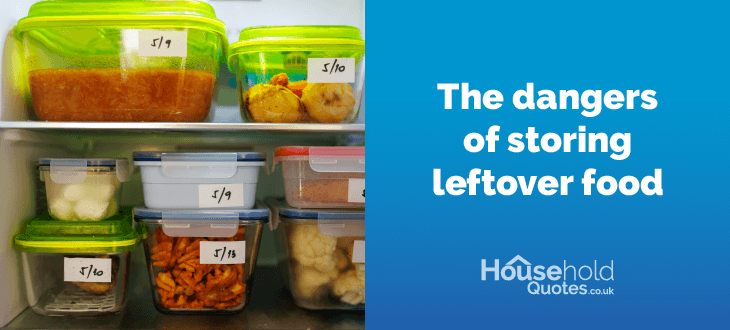- Householdquotes.co.uk
- Blog
- How to safely store leftover food
How to safely store leftover food


Refrigerating or freezing leftovers can save Britons hundreds of pounds each year, this is important due to the ongoing cost of living crisis. Pounds saved can instead be put towards heating your home.
However, storing leftover food can be dangerous if not done correctly. Many people have come down with food poisoning due to the way they store or reheat their food.
So Joshua Houston, Food Storage Expert at Household Quotes has warned against the dangerous mistakes people make when storing leftovers.
How should leftover food be stored?
Once you have finished eating your meal, you should give it time for your food to cool down to room temperature. This might take an hour or so, but once it has happened then store the food in your fridge. Ensure that everything is wrapped or covered, as this will increase the longevity of the leftovers. If you aren’t planning to finish it off quickly, then the food can be frozen in sealed containers for up to six months. To keep on top of dates, label each container you put in the freezer, this will prevent confusion.
What are the dangers of storing leftovers?
Leftovers should only be stored for a maximum of three to four days after you first put them in the fridge. This is because bacteria gradually build-up, which increases the risk of food poisoning. Food poisoning results in sickness and diarrhoea, which will leave you with a couple of very unpleasant days. In some cases, eating bad food has been fatal, so it’s crucial you’re aware of how to properly store leftovers.
You should always wait for food to cool down before refrigerating, as the hot food can increase the temperature of your fridge. This not only puts the leftover food at risk but also anything else that is already being stored. The temperature you’re looking for in a safe refrigerator is anything below four degrees Celsius.
Bacteria can also grow quickly on foods that are left out at room temperature for too long. Our suggestion is a maximum of two hours, as otherwise, you risk consuming bacteria-ridden food later down the line.
How do I reheat the food safely?
When you get to the point that you want to reheat the food, you must follow certain steps. Firstly, you should never reheat something more than once, this increases the risk of bacteria growing which as you probably know by now, can damage your health. You can use a microwave, oven or air fryer to reheat food. Get it to a temperature of at least 74°C before eating, you can check this with a thermometer.
Joshua Houston, Food Storage Expert at Household Quotes:
‘’Storing leftovers gives us better value for money, and with the ongoing cost of living crisis, every penny counts.
It’s important that you store and reheat food safely, as not doing so can lead to you becoming very ill. Following my advice should help prevent that, and give you the peace of mind that what you’re eating is safe.’’

Josh Houston is a writer at Household Quotes whose passionate about the world of renewable energy, energy saving solutions and home improvements. He specialises in providing useful tips that our readers can adopt for their own needs. His skills involve translating complex topics to something more understandable.
